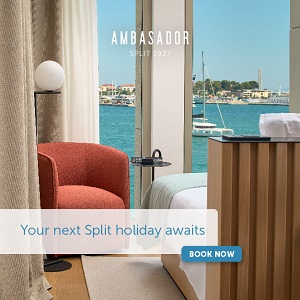3rd International Energy Forum to Take Place in Split
ZAGREB, September 22, 2019 - The International Energy Forum (INTERNEF) will be held at the Hotel Cornaro in the southern Croatian Adriatic city of Split on September 27 to discuss globalisation trends in the energy sector, the Institute for European and Globalisation Studies, which is organising the conference for the third consecutive year, has announced.
The forum's theme will be discussed in three panels: Global Energy Trends and Predictions, the Three Seas Initiative and European Energy Trends, and Europe and Croatia: View on Solar Energy.
The forum is also a sort of reminder of the fact that Croatia will be presiding over the Council of the European Union in 2020 and that an important focus should be placed on energy not just in Croatia but in the entire region as well, the organiser said in a statement.
The first forum was organised in 2017 on the subject of the EU and Russia: Challenges and Opportunities in the Energy Sector in Southeast Europe, while the second forum, held in 2018, focused on geopolitical energy prospects in the EU and Eurasia.
More energy news can be found in the Business section.
Split Scientist Receives Six Million Kuna for Sea Level Research
September 22, 2019 - On the same day, Split scientist Jadranka Sepic received six million kuna and her third child.
"I was delighted when I was told that I had received the project, however, it was during the last days of my pregnancy, and then I was preoccupied with everything - I had a lot of good news over a few days," scientist Jadranka Sepic said.
Thus, the extreme sea-level exploration project will last for five years and will start in September next year, reports RTL.
"Sea levels are projected to rise 40 to 60 centimeters globally, so that certain lower coastal parts of Europe will flood," Sepic adds.
The most vulnerable area to climate change in Croatia is the Neretva Valley. With the sea level rising, almost all the waterfronts in the Adriatic will be flooded, as will most of the old town cores. By 2100, many cities will become a diver-only attraction.
“Flooding will occur more and more, and the old town cores, such as Trogir, Šibenik, and Rijeka, which are quite low-lying, and are especially endangered. Therefore, some preventive measures should be taken to avoid these floods such as raising the coast, the waterfront and the like,” she noted.
The goal in the future is to analyze meteorological situations that are conducive to flooding, although rising sea levels don't seem to be a concern for citizens of Split.
"When it comes to the sea, I'm not afraid of anything. If it comes to that, I would be willing to wait and let the sea level come up to my chin. I would wait there without fear,” says Mate Ivic from Split.
“As a physicist, I am not afraid of rising sea levels so much. I don't think it can really grow so much that it can hurt the world,” said Maja Stojanovic from Novi Sad.
"I suppose it won't go so fast, but we really have to pay attention to nature and what is given to us by God," says Peter Bulat.
Otherwise, Croatia is the second most unsuccessful country after Bulgaria in utilizing EU funds for such projects.
"I suppose that the low pass rate of Croatian scientists is primarily the result of the small number of people applying and that people need to be encouraged to apply, to write their ideas, and I believe that they will then receive more projects," Sepic added.
Considering the statistics, the success of this Split scientist is even greater!
To read more about lifestyle in Croatia, follow TCN's dedicated page.
PHOTOS: Why is Split Best in September? Tourists Speak Out
September 21, 2019 - After Split recorded the highest tourist numbers in August, with more than 193,000 visitors, it looks like September will not disappoint.
On Friday, the Split streets, Riva and old city center were packed with happy tourists, who are usually visiting for the first time. Better yet, the tourists in town now are among the luckiest, as they get to know Split during its ‘Indian summer’.
Slobodna Dalmacija caught up with some of the tourists in town to find out what they’ve been enjoying most and why they opted to travel outside of the peak season.
"We came to Split this moment. We decided on this part of the summer because we only received our holiday now. We found cheap flights to Croatia and came. We will stay for four days, and we are most interested in the beaches, nature and good food. We don't mind that it is cloudy today, we checked the forecast and they say that the other days of our stay in the city will be sunny,” said Toni and Max From Spain.
From Chile came Maria Lena and Angela who soaked up the rays of the sun and watched the boats pass on the Riva.
“We came yesterday and we really like being in a city with so many different cultures and influences, all those little streets and buildings are very interesting to us. We only have two days left and then we go to Hvar,” said Maria Lena. The girls were in Italy with family before Croatia, so the two decided to extend their trip across the Adriatic.
“We wanted to get to know Croatia as well, because we have heard from many that it is very beautiful and that it is best to come in late summer when there are not many crowds and tourists, as well as the heat. And they were all right, the weather is gorgeous and not too hot,” Maria Lena said happily, to which Angela added that they have not been to the beach yet, but they will not miss it. The beaches, as expected, are one of the main reasons the two are in Split, and they plan to try local specialties as well.
“We have heard from everyone that the fish is very good, so I think we will find a restaurant where we will try it. First, we will go somewhere for a relaxing massage and then eat some local food,” they said.
Walking the Riva was also a group of German tourists who know very well that this is the best time of the season, which was of particular importance to them because they are traveling with a small baby.
“We are here for seven days and are staying in Marina near Trogir. It is our first time in Split and we want to explore everything in it. I like it very much, it is not very hot, there are no crowds, we can walk with our baby, go swimming and we are great. We are interested in everything - from the old town to beaches, this city really has a lot to offer so we can choose what to do,” said Samson from Germany.
His friend David agreed that the weather and this part of the summer were perfect for enjoying your first visit to the city.
“The weather is perfect, and we can combine the beach and tour the city. It is very nice and we are enjoying every moment in Split,” said David.
Apart from the fact that the locals love and celebrate the famous “Indian summer“, it seems that foreigners have discovered all its charms, too. Warm weather, a still pleasant sea, and less crowded streets are the prime combination many of us here have been eagerly awaiting - and let's hope it’ll last as long as possible!
Check out the post-peak-season summer Saturday in Split in our photos below.


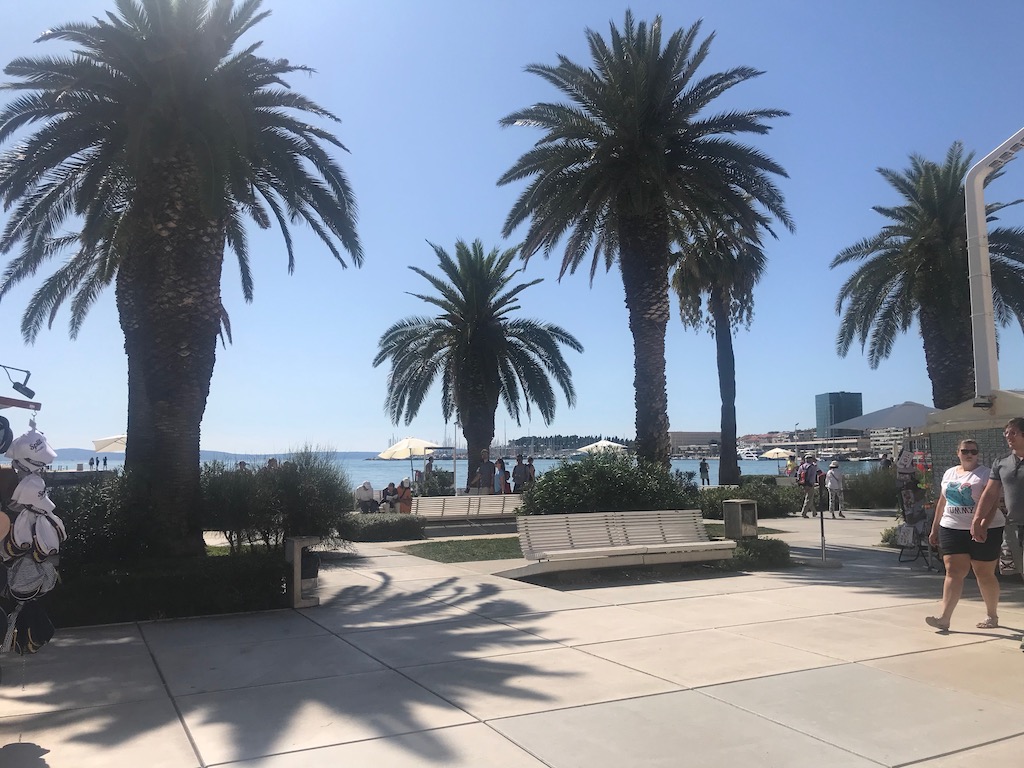
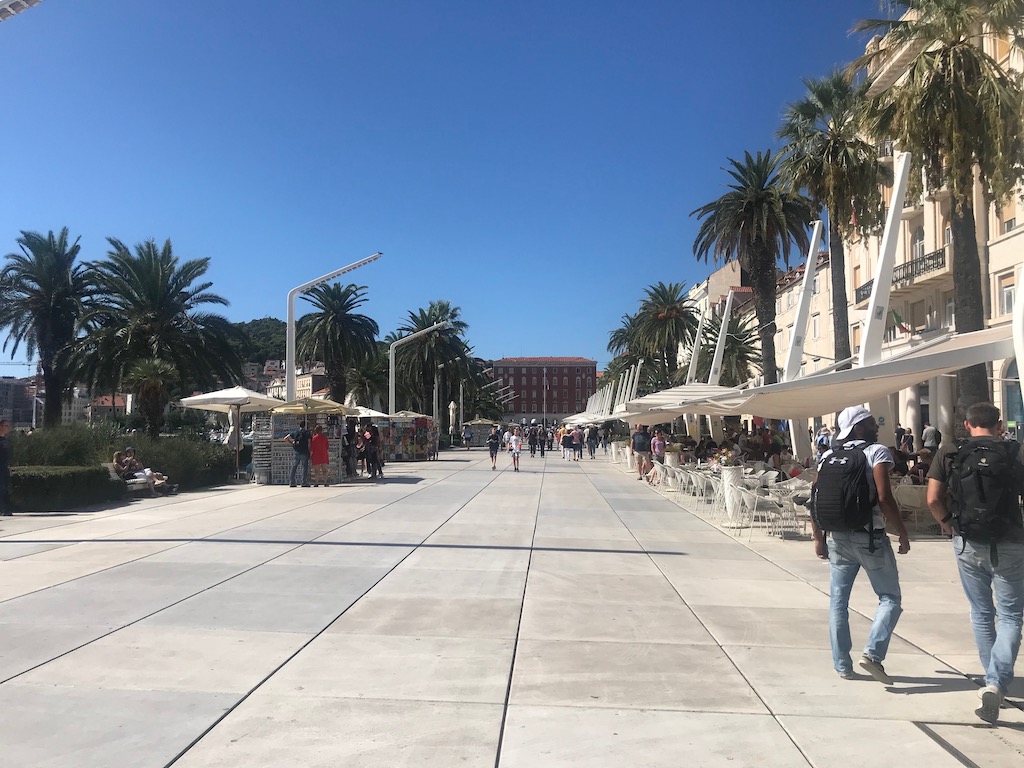
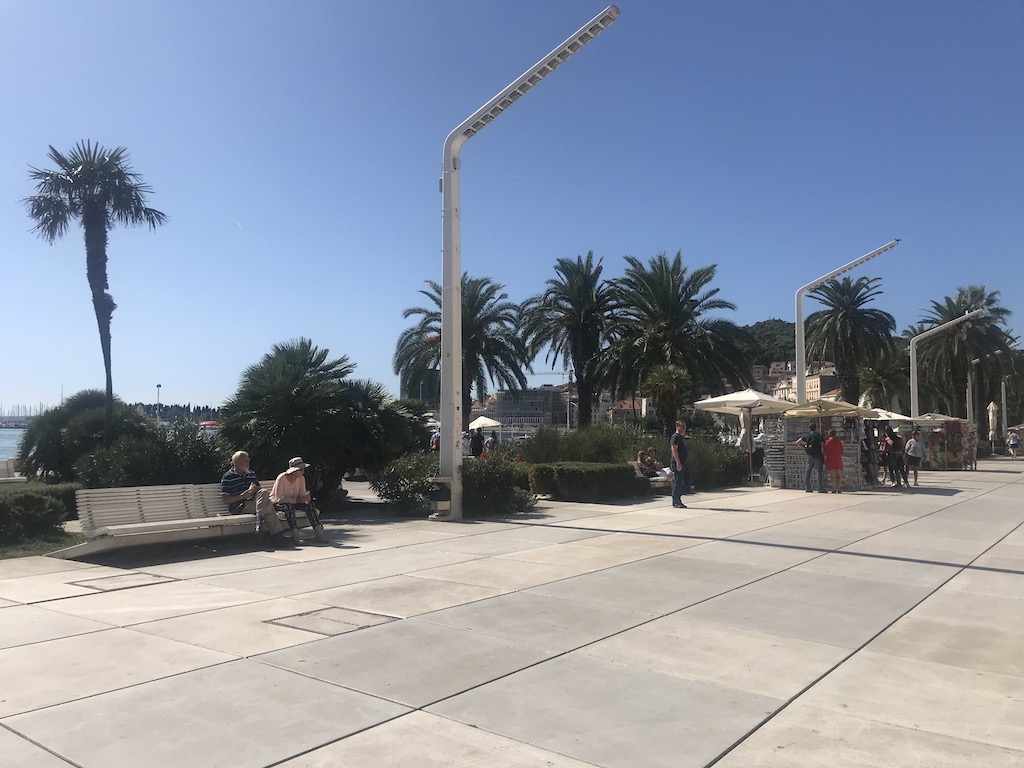
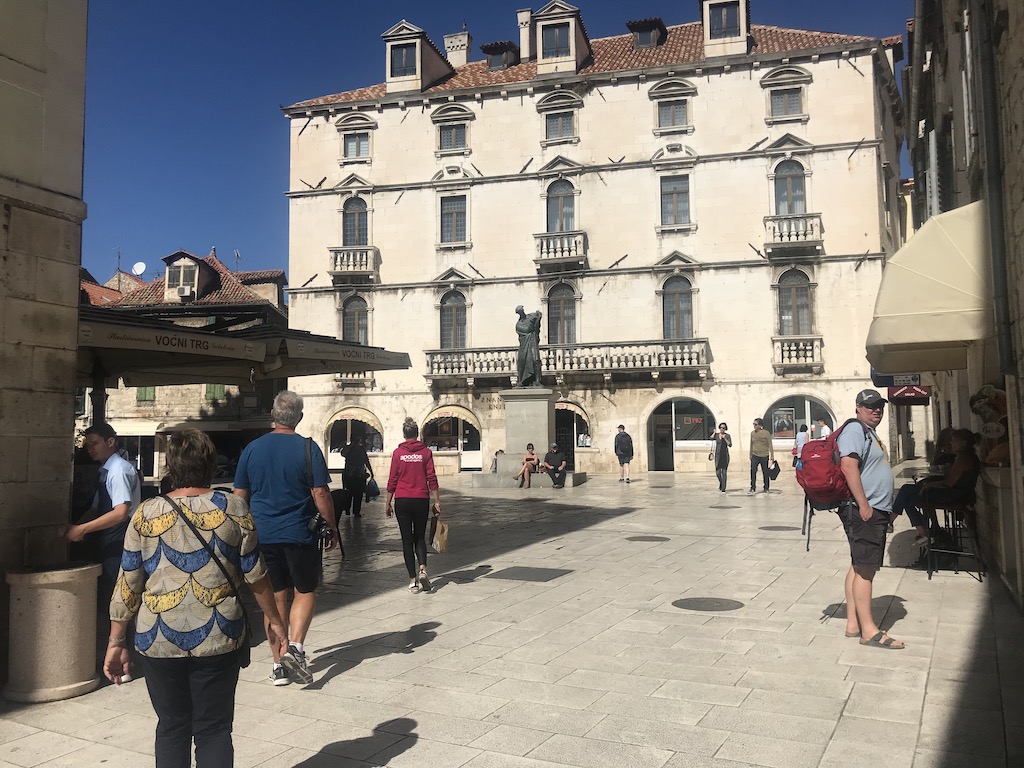


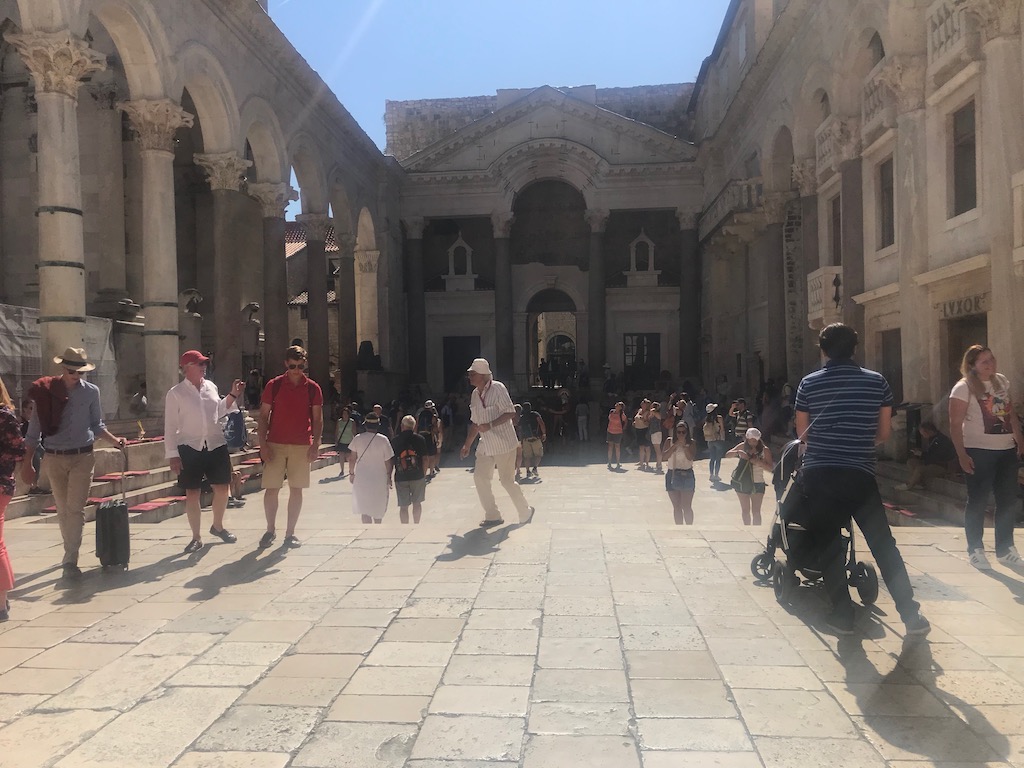
To read more about travel in Croatia, follow TCN's dedicated page.
Meet the New Cafes, Bars and Restaurants that Marked 2019 Split Summer
September 20, 2019 - Just three days away from welcoming a new season, we thought we’d reminisce on another summer gone with some of the new establishments making a buzz in Split this year.
If you’re a Split local, you’ll most likely find it hard to do much of anything during the summer because a) you work in tourism b) you work in hospitality or c) you only feel safe in the comfort of your air-conditioned apartment away from the crowds.
However, unless you truly do live in a cave, you’re aware that Split is a continually evolving Dalmatian hotspot that has been milking the perks of its rebirth for almost a decade - and with each new season comes a swarm of new swanky establishments for Split citizens and tourists to enjoy.
Thus, we present some of the conversation-starting stations new to the Split scene this season.
MoNIKa’s Wine Bar: Located at the beginning of Varos in the Sperun area, MoNIKa’s Wine Bar opened in April to the delight of wine drinkers and charcuterie enthusiasts. Securing the number one spot on Tripadvisor more than a few times this summer, MoNIKa’s serves up Croatian wines, meat and cheese plates, seafood tapas and wine tasting evenings.
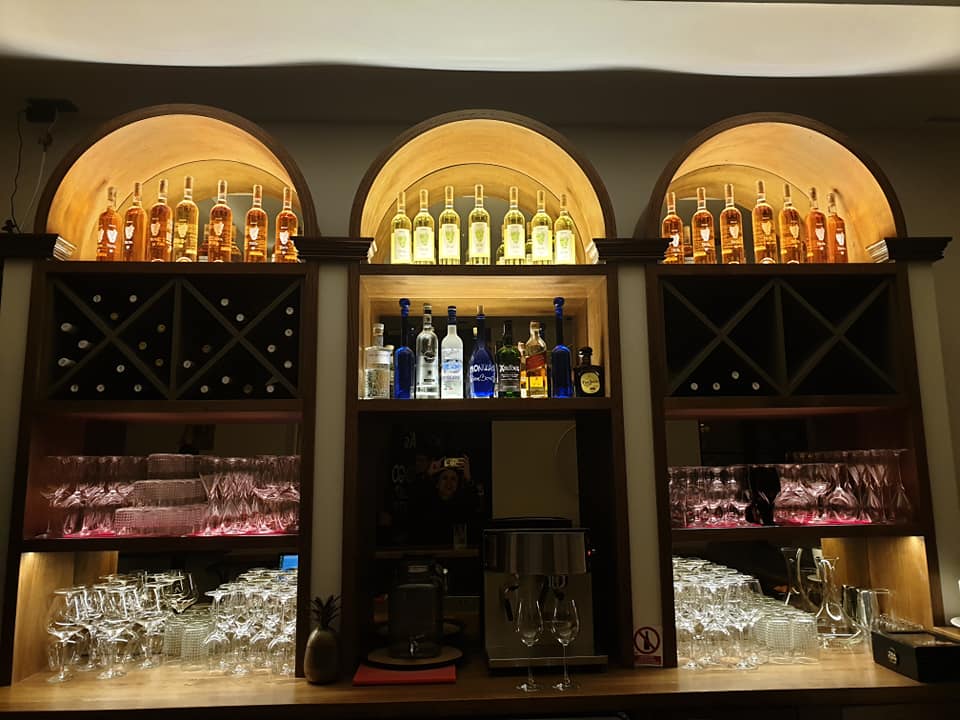
Brutal Bar & Kitchen: If there is one new place tourists are raving about in Split this summer, it’s Brutal. Also a TripAdvisor frontrunner, Brutal is a small alleyway charm that belongs on the streets of San Francisco or New York. Praised for its open kitchen, cool countertops, and a menu that ranges from roasted tomato carpaccio to pork belly lettuce wraps, eggplant ratatouille and monkfish ‘cigars’, how could one go wrong?
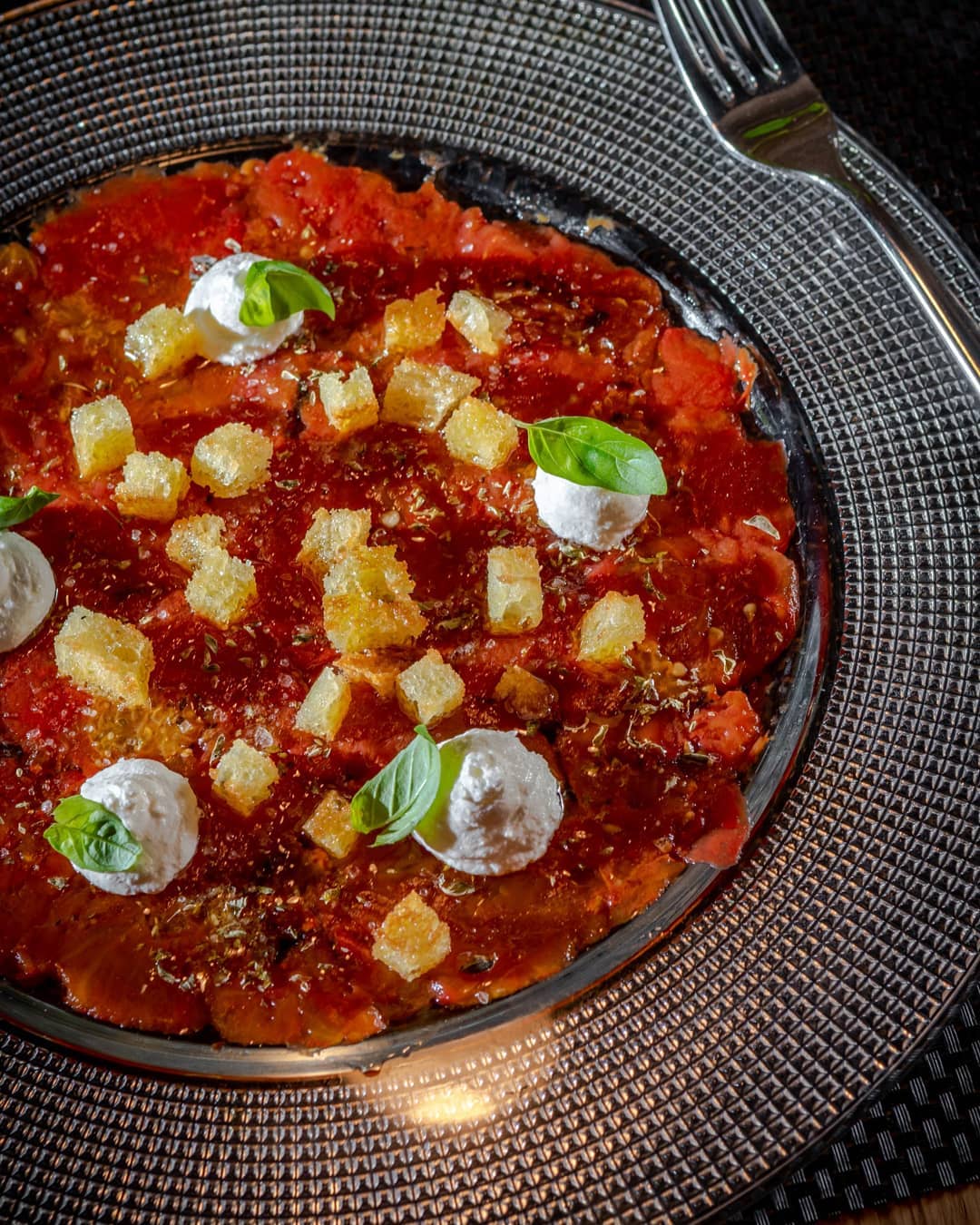
Pandora Greenbox: The sister to the already popular Split hotspot Corto Maltese, Pandora opened just in time to catch careful and clean eating tourists in Split. Priding themselves on plant-based meals, cold-pressed juices, cocktails, and gluten-free craft beer, Pandora’s nature-inspired interior design will make you feel as if you’re far away from Split - and most likely in the middle of a rainforest. With something for the vegans, vegetarians, gluten-free-ers, and clean eaters, Pandora is undoubtedly a new Split favorite.
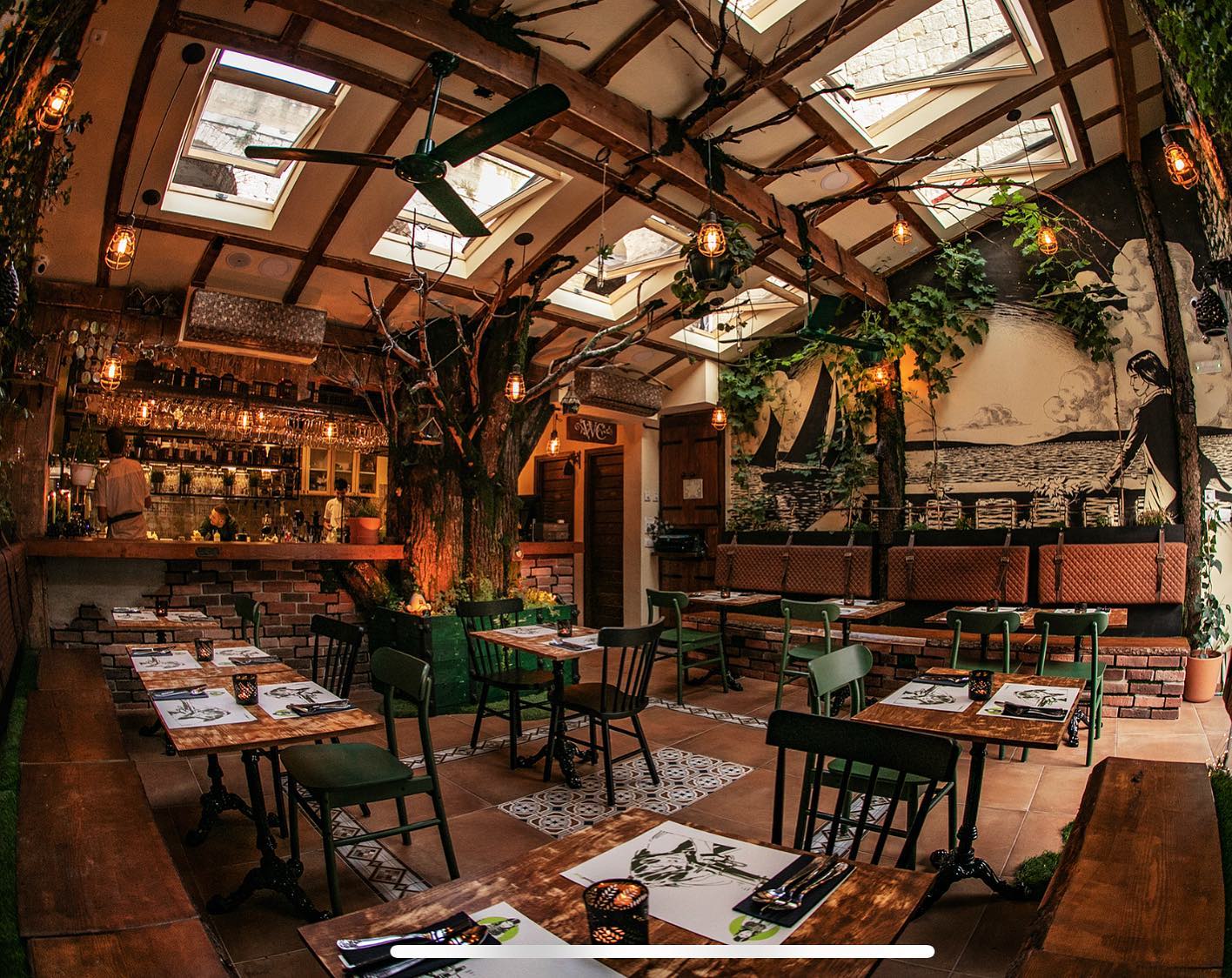
Fig: Just around the corner from Peristyle is Fig, though you might already be familiar with the name thanks to the island of Hvar. A popular new breakfast spot in the center that boasts California toast and breakfast burritos, Fig is no stranger to the lunch and dinner crowd, either - with veggie or chicken korma, Mexican pulled pork and a BBQ and bacon house burger among your feasting choices.
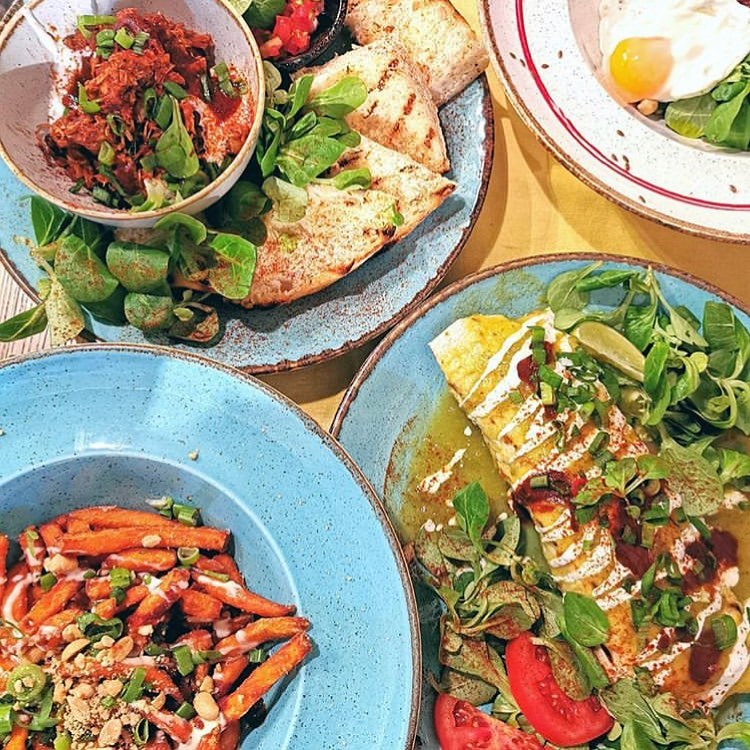
Mini Bota Oyster & Sushi Bar: Because we know you remember Bota Sare, which said goodbye to its restaurant space last year. However, sushi lovers now get to taste Mini Bota, their new, smaller alleyway spot where you can get ‘direct access to the ingredients, the chefs and the preparation process’. Offering pick up or dine in, get your rolls, sashimi, and nigiri here!
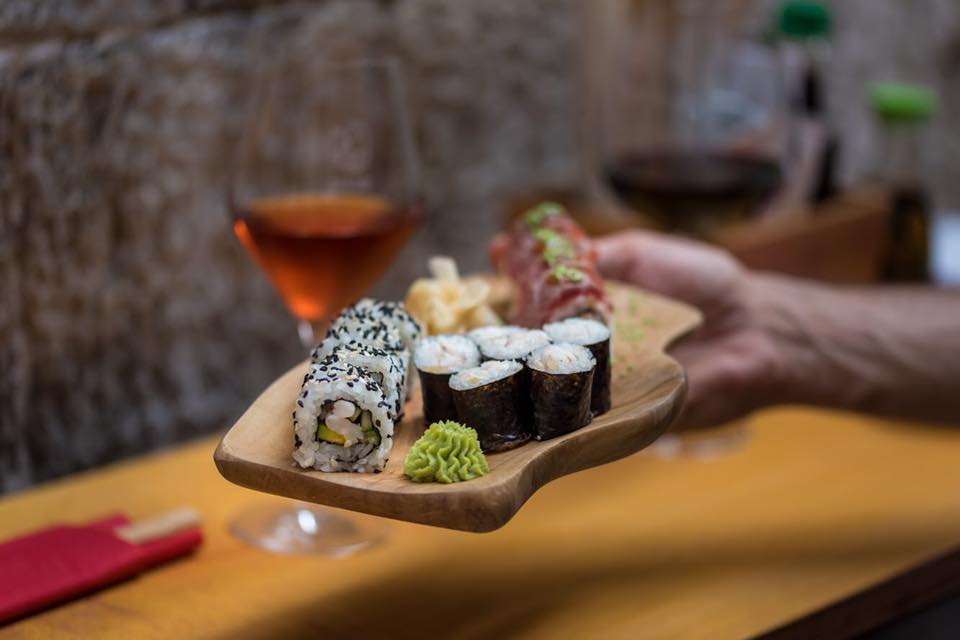
Historic Downtown Grill: New to the Stari Plac area, Downtown Grill specializes in, well, you guessed it - grill. Said to have some of the best burgers in Split, seafood options and live music, Downtown Grill is also praised for their homemade lemonades and grappas.
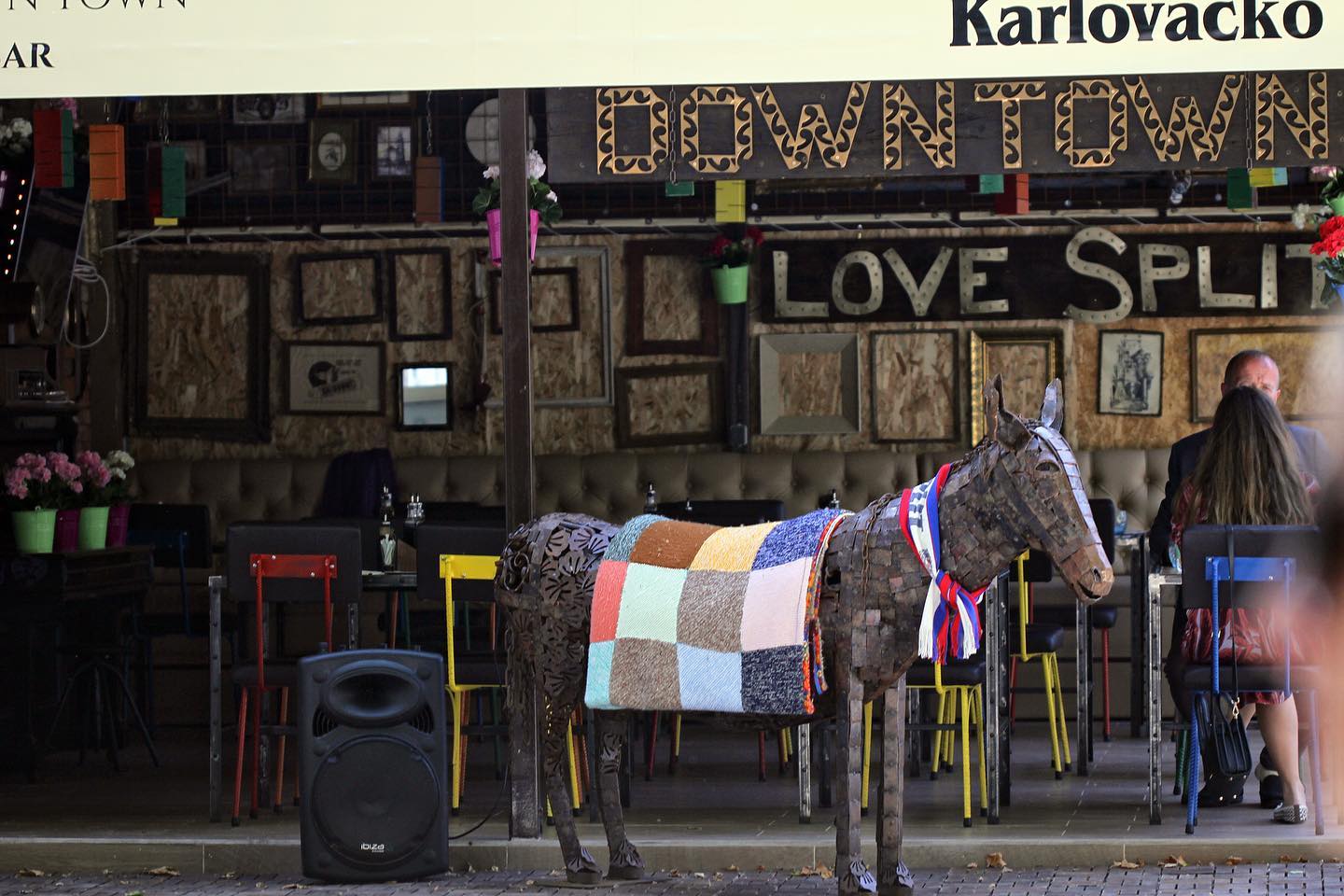
Superfood Healthy Food Factory: The second Superfood location opened up just before the summer season near Prokurative. Known for their matcha lattes, raw cakes, protein platters, spelt pizza, gazpacho and seafood dishes, Superfood has something for everyone - even Split’s vegan guests.
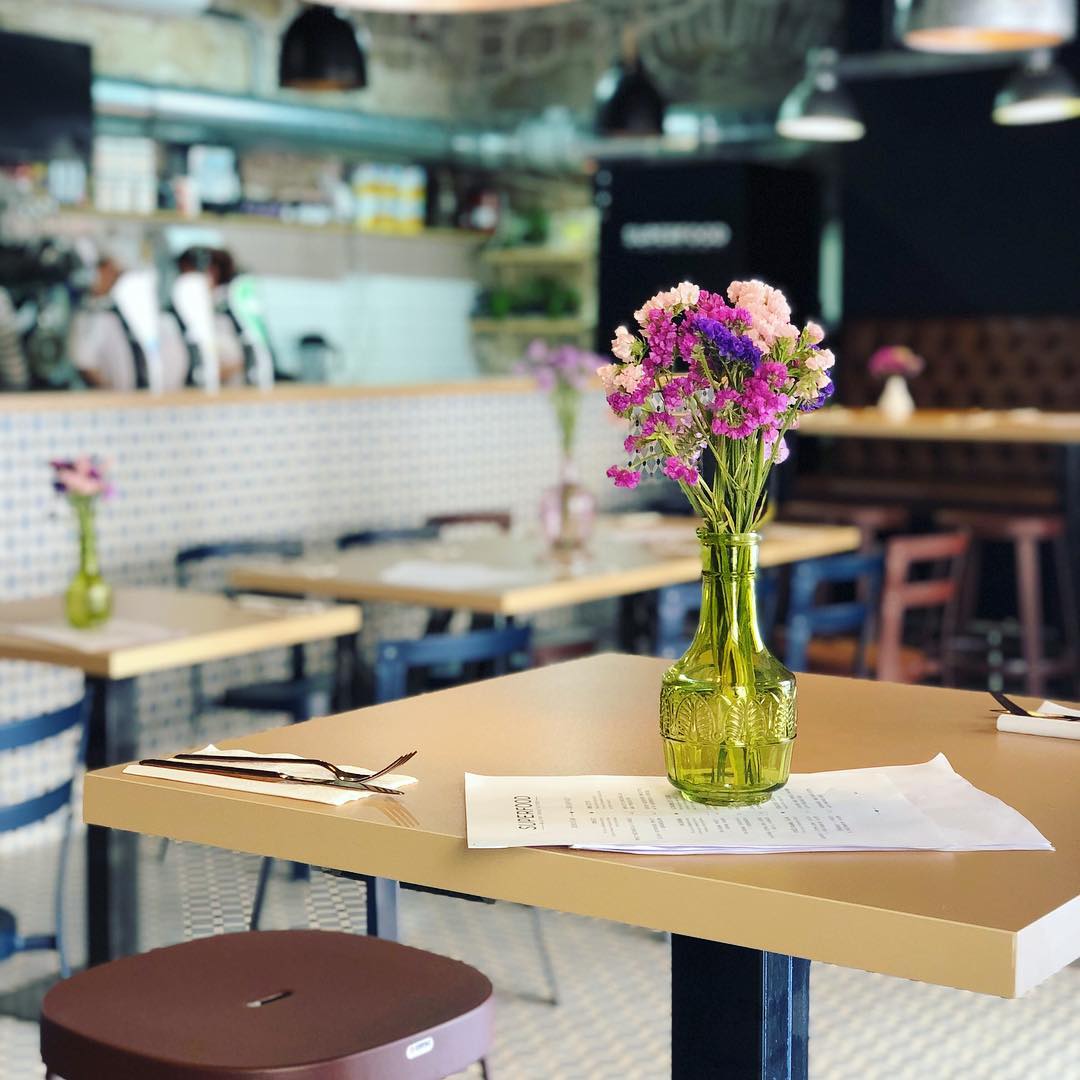
Funky George: A new fast food joint can be found at the top of Bosanska - meet Funky George. Good for cheap and meaty sandwiches topped with grilled peppers and pickles, homemade pretzels, American pancakes, pumpkin and sweet potato fries, smoothies and craft beer, Funky George has become a staple for Split’s bar crowd.

Food Factory: Live and raw, that’s what you’ll find at this new Stari Plac spot. A ‘bistro takeaway concept and a retail store’, Food Factory is run by Darko Jurić who believes in bringing gourmet plant-based cuisine to Split. Things like cold brew coffee, smoothies, desserts, and a takeaway menu including wakame corn crockets or plant-based burgers are just part of the show.
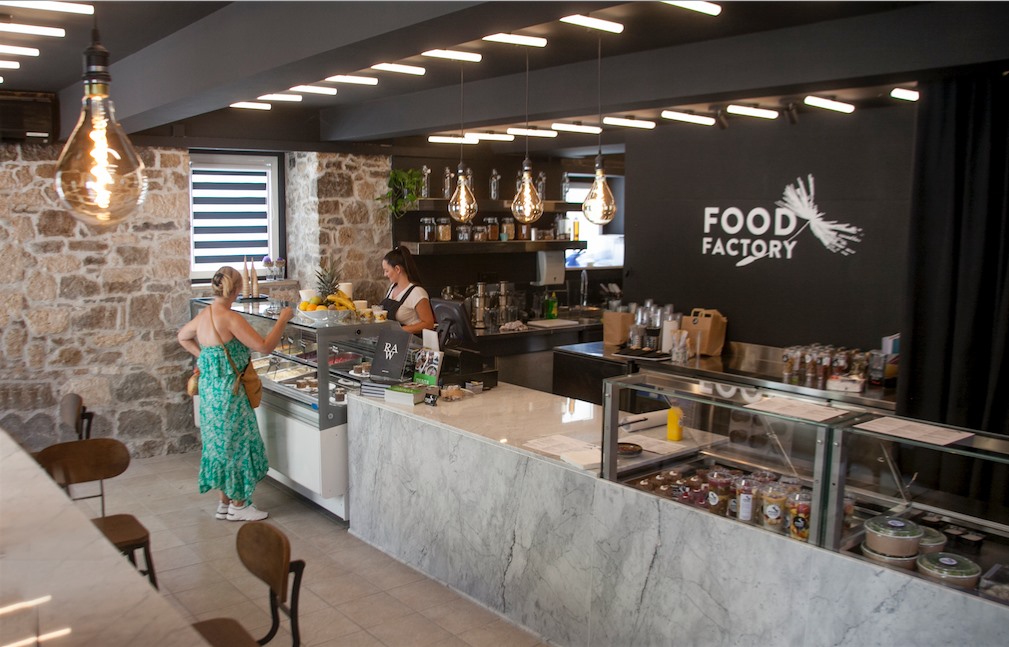
Kava 22: If you’re into coffee, and we mean really, really into coffee, you’ll fall in love with Kava at first sip. Their second Croatian location after they opened Kava 37 in Hvar town, Kava 2 is a short walk outside of the city center by the President Hotel, and has been making waves in the Split coffee-loving crowd. From a perfectly poured flat white to piccolos, cold brew tonic and beans for sale, you’ll head to Kava if you know what’s good for you.

What are your favorite new places in Split this summer?
To read more about lifestyle in Croatia, follow TCN's dedicated page.
Picigin Days Returns to Bacvice Beach in Split Next Weekend
September 19, 2019 - Split society 'Picigin Bacvice' will host this year's 'Picigin Days' on September 27 and 28 at Bacvice beach.
Picigin was created on the sandy beach of Bacvice in Split somewhere around 1923, and precisely who invented the game? We’re still unsure. The game is played throughout the year by the young and old, men and women, and is simple enough for anyone to enjoy.
Picigin is played in a circle with two or more players, with the objective being to keep a small rubber ball in the air between the players as long as possible.
The game ends once the ball hits the ground, er, water.
Picigin is played in shallow waters (thanks to Bacvice) with depths never reaching above the knee. While the first Picigin players were known to wear monokini swimsuits, today, you can only play the sport wearing a speedo.
One of the least expensive sports you can enjoy in Split, Picigin is even played on the New Year holiday when sea temperatures could drop as low as 10 degrees Celsius.
Thus, to celebrate the 20th anniversary of the favorite Split society 'Picigin Bacvice', this year's 'Picigin Days' will be held on September 27 and 28 at Bacvice beach - and on October 23, the society's 20th anniversary will be celebrated at the Marko Marulić Library, reports Dalmacija Danas.
After ten or so years successfully hosting the Picigin World Championships, last year, there were changes to the competitive concept. Thus, Picigin Days were established, a manifestation to revive the character through which, apart from picigin, efforts are made to promote other traditional and new games and activities, all organized by the Ecological Society 'Picigin Bacvice'.
Therefore, this year, with the inevitable picigin spectacle, there will also be football on the sand, shallow football (Nogbi), Glavomet (or football with your head) and some new games such as Picigol, Picington and Pennis.
In addition to the sporting events, there are plans to landscape the beach, where ornamental plants and tree seedlings will be planted.
Friday, September 27, 5 pm
In the afternoon and early evening, plans will be made to landscape the beach and holes will be prepared to plant tamarisk and ornamental plants. All tools will be provided. Members of the society are expected to attend the action, and of course, citizens and supporters of the society are also welcome.
Saturday, September 28 (10 am - official program start)
10:30 am - football on the sand, shallow football (Nogbi), and Picington. Planting ornamental plants and trees immediately begin
10:40 to 12 pm - Picigin - a revue of picigin crews from Bacvice and the neighboring Firule
12 to 12:30 pm - Picigol in the sea, Pennis in the sea
1 pm - Snack and drink
Wednesday, October. 23 (6 pm - Marko Marulić Library)
The 20th-anniversary celebration of the founding of the Ecological Society 'Picigin Bacvice', with a commemorative program and thanks
To read more about lifestyle in Croatia, follow TCN's dedicated page.
Flights to Croatia: Transavia Strengthens Zadar for 2020
September 19, 2019 - The latest news from around Croatia’s airports for new flights to Croatia with updates from Zadar and Split.
Dutch low-cost airline Transavia has announced their 2020 flight schedule. Flights to Croatian destinations remain mostly with the same number of flights as this year, though the airline has chosen to boost operations to Zadar next year.
Namely, Avio Radar reports that the route between Rotterdam/The Hague and Zadar began operating this year from July with two flights a week, on Wednesdays and Saturdays. Next year, this line will begin operations two months earlier, from April 18. In the preseason, there will be two flights a week, and in July and August, an additional third flight per week on Mondays. A Boeing 737-700 aircraft or larger Boeing 737-800 will service this line.
Furthermore, Avio Radar reports that larger aircraft will fly on the charter lines of Scandinavian travel agency Apollo next year. Namely, Apollo has contracted charter flights for Croatia with the Danish airline JetTime for the 2020 flight schedule. This includes two lines - Gothenburg - Split and Copenhagen - Split. Both charter lines will run once a week, on Saturdays, From May 9 to October 3, 2020. A Boeing 737-700 aircraft is expected to service this route, while a smaller British Aerospace ARJ-100 flew this year by Swedish regional airline Braathens.
Croatia’s nine commercial airports are on schedule to handle over eleven million passengers in 2019, which is an increase compared to 2018’s 10.5 million.
Ex Yu Aviation reports that Croatia recorded the 7th largest passenger growth in the European Union so far this year, behind Austria, Latvia, Portugal, Finland, Hungary, and Malta, but ahead of the remaining 21-member states. Namely, from January to August, Croatian airports handled 8,285,615 travelers, which is up 8.7%.
Dubrovnik Airport recorded an additional 240,016 passengers compared to last year, though Split Airport continues to be the busiest in Croatia.
To read more about travel in Croatia, follow TCN’s dedicated page.
City of Split and HNS Meet: Details Revealed
September 19, 2019 - Croatia and Hungary will meet at Poljud Stadium next month for a crucial Euro 2020 qualifier. The City of Split and HNS sat down at Poljud on Wednesday to discuss the details.
Slobodna Dalmacija and Gol.hr report that a five-hour marathon meeting was held on Wednesday at Poljud on the topic of the upcoming Croatia-Hungary match, which will be played on Thursday 10 October. The media learned at 3 pm on Wednesday that everything is going according to plan, and that they are moving to the City Administration where they will finalize the contract they had not yet signed.
Just after 10 am, executive chairman Marijan Kustic arrived at the head of a large HNS delegation, including Vlado Iveta, Niksa Martinac, Zoran Cvrk, and female representatives and match managers Helena Pushkar and Antonia Burazer, who runs the VIP.
“What are the points in the contract? The organization of the match, the items that HNS is taking over, that is what we spoke about. There is no controversy, but there are a lot of details, a lot of points, so everything took five hours,” Kustic said pleased after the meeting.
Is Hajduk still not participating in the organization of the match?
“I’d be the happiest if they chose to participate. But, we are negotiating with the City and signing a contract with them,” Kustic added.
Split Mayor of Andro Krustolovic Opara was only at the beginning of the meeting to welcome the HNS delegation to Poljud, before hurrying back to the City Administration. Thus, the details were agreed by Mate Omazic and Domagoj Maroevic, and Kustic was to join Opara at the City Administration later.
"It is important that the people and services work and cooperate and look for the best model for this to be a win-win situation," said Split Mayor Andro Krstulovic Opara. Recall, Dalmatinski Portal reported that the message ‘Opara liar - choose a side' welcomed the Split Mayor in front of Poljud Stadium on Wednesday.
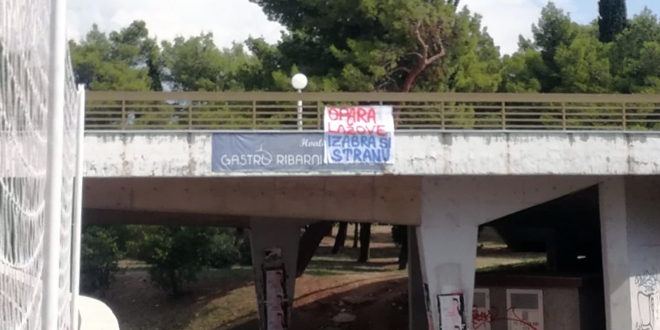
While some might think the most important win would entail qualifying points, the victories the mayor speaks of is normalizing relationships in Croatian football - and with Hajduk specifically.
"I want both Hajduk and HNS to come to the situation they announced two months ago, and I believe we are on the right track," Opara added.
"The items that HNS itself is taking over are in regards to the organization, and they are taking over some of the things that we have discussed. But in the end, we agreed on everything," he said.
Thus, the return of the Croatia national team and 2018 World Cup finalists to Poljud in Split goes its course. Tickets will be on sale from Monday and run between 100 to 250 kuna. In responding to media reports, Kustic does not believe that ticket prices are unusually high (up to 250 kuna on the day of the match).
Recall, the match at Poljud on October 10 is the return of the national team to Split for the first time since 2015. The World Cup finalists last played at Poljud in 2015 against Italy behind closed doors. Before that, they met Georgia in 2011. Both matches were played as qualifiers for the European Championships, in 2012 and 2016 respectively.
Croatia is on the verge of qualifying for the Euro once again, and every four years the national team seems to arrive back in Split.
This will be the 13th ever match played in Split, at Poljud Stadium, since Croatia gained independence.
The meeting on Wednesday was the second of such a gathering at Poljud.
To read more about sport in Croatia, follow TCN’s dedicated page.
City of Split and HNS Meet at Poljud to Discuss Upcoming Euro 2020 Qualifier
September 18, 2019 - The City of Split and the Croatian Football Federation met at Poljud Stadium on Wednesday to discuss the technical details of organizing the upcoming Euro 2020 qualifier between Croatia and Hungary.
Slobodna Dalmacija writes that the Croatian Football Federation and the City of Split should take a new step towards hosting the upcoming Euro 2020 qualifier between the national teams of Croatia and Hungary, which will be played on October 10 at Poljud. The meeting likely focused on the organization of the match.
It is necessary to emphasize that Hajduk is not involved in the organization of this match, that is, until HNS has shown serious signs towards normalizing their relationship. Recall, Hajduk previously presented their seven requirements to the umbrella football organization, which they expected to be fulfilled as a prerequisite for eventually becoming involved in the organization of this European qualifier.
Certain processes have been initiated, like the meeting in Dugopolje recently been held with HNS and the County Federation, but the results are nowhere near tangible. Thus, Hajduk will continue to hold off from jumping in on the organization of the national team match, which is here in just three weeks.
At 10:15 am Wednesday morning, an HNS delegation led by executive president Marijan Kustic and Zoran Cvrk arrived at Poljud. The representatives of the City of Split, led by Mayor Andro Krstulovic Opara, followed.
What we know thus far is that the main topic of the meeting would be to harmonize the technical details. However, some Croatian media unofficially reported that no contract had yet been signed to play the match between Croatia and Hungary at Poljud. This formality was expected on Wednesday or in the coming days.
While we await the details from the meeting, Dalmatinski Portal reported that the message ‘Opara liar - choose a side' welcomed the Split Mayor in front of Poljud Stadium on Wednesday.

Dalmatinski Portal / N.M.
Recall that Croatia and Hungary will plat at Poljud on October 10, which is the return of the national team to Split for the first time since 2015. The World Cup finalists last played at Poljud in 2015 against Italy behind closed doors. Before that, they met Georgia in 2011. Both matches were played as qualifiers for the European Championships, in 2012 and 2016 respectively.
Croatia is on the verge of qualifying for the Euro once again, and every four years the national team seems to arrive back in Split.
This will be the 13th ever match played in Split, at Poljud Stadium, since Croatia gained independence.
The meeting on Wednesday is the second of such a gathering at Poljud.
More details soon.
To read more about sport in Croatia, follow TCN’s dedicated page.
Flights to Croatia: Korean Air Reduces Winter Capacity, Smartwings Boosts Split Service
September 16, 2019 - The latest news from around Croatia’s airports for new flights to Croatia with updates from Zagreb and Split.
Avio Radar reports that Korean national carrier Korean Air, a member of the SkyTeam Airline Alliance, will reduce aircraft capacity slightly on its route between Seoul (Incheon Airport) and Zagreb in the coming winter flight schedule.
Thus, instead of the new and larger Boeing 787-7 Dreamliner aircraft, which flew last winter and this summer, the upcoming winter season will feature the Airbus A330-200, which has the capacity for 218 passengers. The winter schedule will run from November 2019 to March 2020.
Additionally, Korean Air will continue to operate on the Seoul-Zagreb-Zurich-Seoul route this winter.
Moving from the capital to the coast, Avio Radar also reports that Czech carrier Smartwings will increase operations on their service between Poland and Split for the 2020 summer season. Namely, the airline will run three flights per week on both lines - Warsaw (Frederic Chopin Airport) and Split-Katowice.
In addition to this year’s one flight per week, which took off on Thursdays, two flights have been added per week on both routes - on Mondays and Saturdays. These new lines will begin working on May 25, 2020. The end of traffic on these routes is still unknown, though tickets are currently on sale until September 7, 2020. Smartwings will operate both routes using a Boeing 737-800 aircraft.
Recall, TCN recently reported that national carrier Croatia Airlines would add a one flight per week between Brussels and Zagreb this winter, totaling to 12 per week. Furthermore, the seasonal service between Zagreb and Dublin will work until January 26, 2020, while its operations between Zagreb and Lisbon will end at the end of October.
Croatia Airlines will maintain the same winter operations for other Croatian cities this year, which include flights from Split to Frankfurt, Munich and Rome, Dubrovnik to Frankfurt, and Rijeka to Munich. Croatia Airlines has also announced no changes to its winter operations between Croatian locations.
To read more about travel in Croatia, follow TCN’s dedicated page.
On this Day in 1979, VIII Mediterranean Games Begin in Split
September 15, 2019 - The VIII Mediterranean Games was held in Split from September 15-29, 1979. Today, we mark the 40th anniversary.
From the opening ceremony, which was held on September 15, 1979, to the closing ceremony, which was held on September 29, 1979, fourteen nations competed in 192 events across 26 different sports.
The Mediterranean Games hosted athletes who competed in 25 sports and 186 disciplines and forced Dalmatia to build capital facilities that at the time did not exist. While eight other cities in Dalmatia were involved, including Trogir, Makarska, Sinj, Hvar, Šibenik, Zadar, Omiš and Supetar, Split was the center of the event.
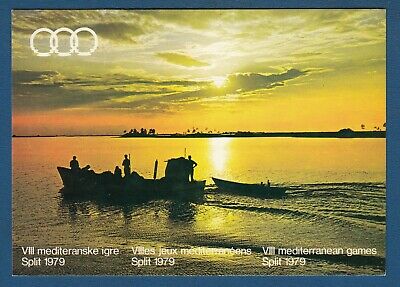
Postcard from the event
Recall, Split received a beautiful new stadium, Poljud, which at that time was one of the largest in Europe. A complex of pools was also built at Poljud, as well as a large and small hall at Gripe. A shooting range was constructed in Stobreč, and a complex of tennis courts and one for martial arts in Gripe. In addition to the HNK Split stadium, the Gripe basketball hall and court in Kaštel Gomilica were renovated.
Thanks to the Mediterranean Games, Split and many other cities in Dalmatia received a variety of new sports facilities. Trogir received a new sports hall, while Omiš renovated their football field. The Hippodrome in Sinj was updated, a field for archery in Supetar on Brač was built, a rowing track in Zaton was made, Zadar and Makarska received a new football field, and Hvar even received a new sports hall.
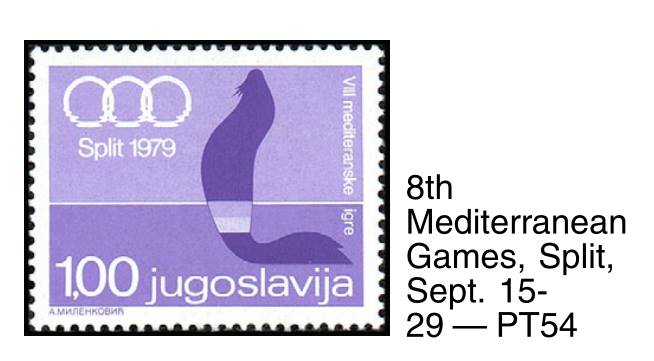
Postage stamps from the event
The entire visual concept of the Mediterranean Games in Split is credited to the well-known and multi-award-winning Croatian designer Boris Ljubičić - a man with origins in Sinj but an address in Zagreb. The simple three white circles are still revered in the graphic design world today.
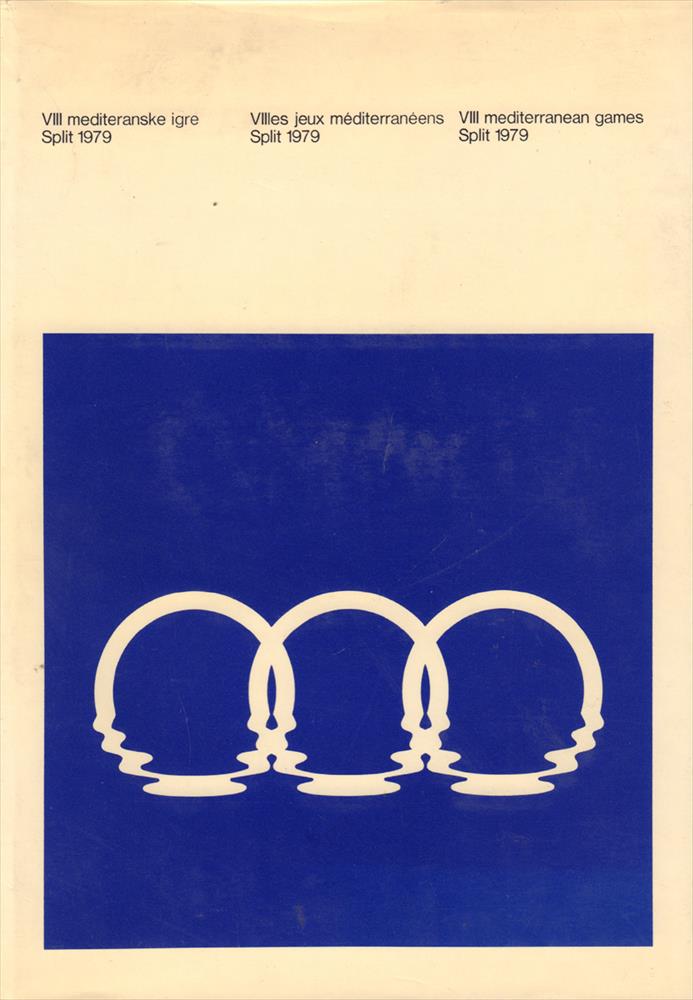
Design by Boris Ljubičić
The 8th Mediterranean Games saw the participation of 2408 athletes (out of which 399 were women), 882 judges, 25 delegates and 811 sports workers, which added up to 4126 accredited persons. Most of the athletes were represented by the countries of Yugoslavia (409), Italy (368), France (287) and Spain (263). The athletes competed in a series of sports, including athletics, cycling, boxing, weightlifting, gymnastics, hockey, wrestling, sailing, judo, kayaking, equestrian sports, basketball, fencing, football, volleyball, swimming, rugby, handball, diving, table tennis, shooting, archery, tennis, water polo and rowing.
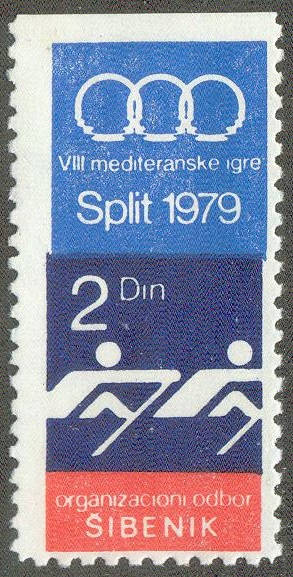
The city of Split did not only receive functional sports facilities for the event, but they also received accompanying infrastructure. A large passenger terminal was built at Resnik (Split) Airport, and a naval terminal was built in the City Port, as well as a new RTV Center. The tunnel through Marjan and the road and rail routes created preconditions for solving traffic problems in the city and its surroundings, and a series of interventions on the reconstruction of electricity, water supply, and sewage systems, and telecommunication connections were carried out.
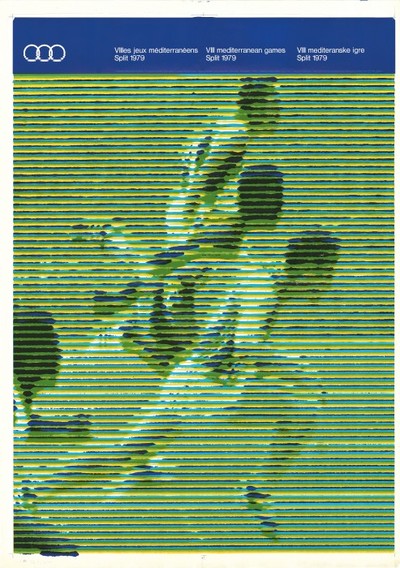
It was necessary to complete the second phase of the construction of the Hotel Marjan and Medena to accommodate the athletes and assistants. The capacity of Hotel Medena, before the start of the additional construction of the bungalow, was 1240 beds, and for the Mediterranean Games, the capacity was increased to 1956 beds. Marjan's capacity rose from 400 to 610 beds. Within the hotel, there was also a congress hall for 600 guests. During the event, the main press center was located there. The Hotel Lav hosted sports workers and representatives from 14 countries who participated in the games. The Bellevue Hotel and the Adriana and Luxor restaurants were also reconstructed. All this construction and the reconstruction of existing facilities cost 2.6 billion Dinars. Split, thus, acquired all the preconditions for accommodating the top athletes in these capital facilities.
The opening of the Mediterranean Games in Split saw a large number of sports and political figures including Michael Morris (Lord Killanin), president of the International Olympic Committee, Josip Broz Tito, President of Yugoslavia and Stane Dolanc, chairman of the Committee of the 8th Mediterranean Games. The Games were opened at Poljud in front of 50,000 spectators.
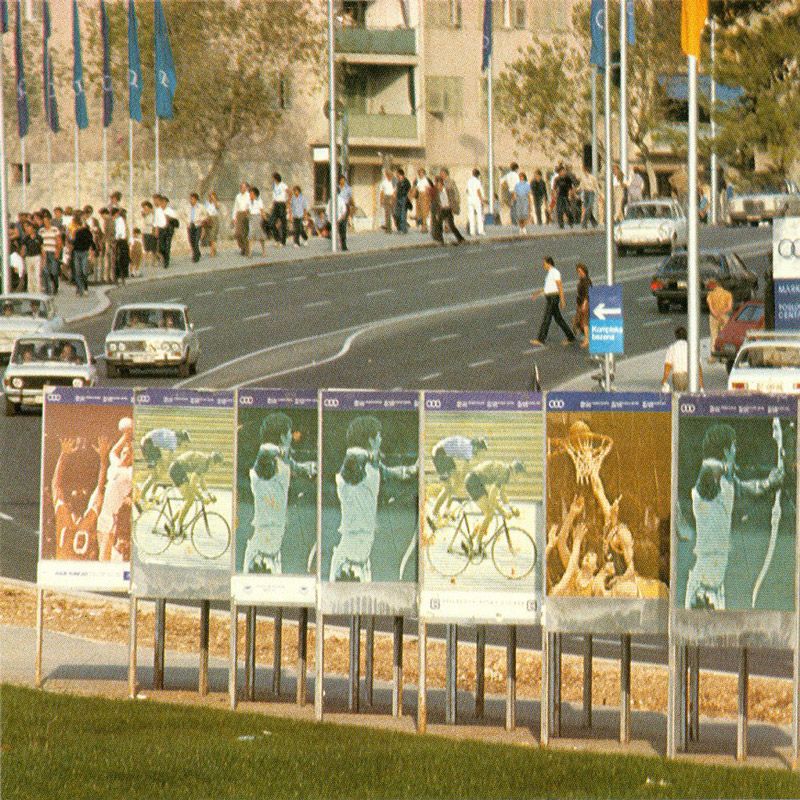
GKMM
Yugoslavia took home the most gold medals from the event (56), followed by France (55) and Italy (49).
Excerpts translated from Mladen Cukrov on GKMM
To read more about lifestyle in Croatia, follow TCN's dedicated page.

